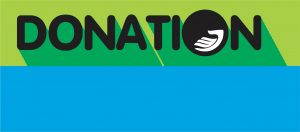Finance unit
Hustai National Park has unique management and financial features. From the start of the organization it has only been financially supported by international projects and travel and tourism.
The Park's staff have proven themselves very energetic and able stewards of this 50,000 ha large natural reserve. They recieve help from the local authorities, the Buffer Zone Councils and by the nomadic herdsmen families around Hustai.
A variety of local stakeholders participate in the Buffer Zone Council. The management team of Hustai proposed to privatize the National Park and in 2003, saw the institution of an independent, non-governmental foundation in accordance with Mongolian legislation. By means of a long-term agreement the Mongolian government gave the managerial responsibilities of Hustai National Park to this new foundation.
The foundation was formed by the Mongolian Association for Nature and Environment (MACNE), the Buffer Zone Council and the Foundation Reserves Przewalski Horse. There are five members on the board. The Mongolian Ministry of Nature and Environment and the three founding parties are entitled to appoint a member each.
Financial Background and Breakdown of the Foundation Reserves Przewalski Horse’s Contribution
Hustai’s finances are quite complicated, if you have any questions please contact us, we are happy to explain anything. Why is it so complicated? They are the result of collective financing of internal and external non-governmental and governmental organizations.
The first 15 takhi (Przewaslki horse) landed in Hustai on 1992.06.05, after the reintroduction project started in 1970. The Foundation Reserves Przewalski Horse (FRPH) bought different and good horse gene samples from zoos around the world. The FRPH financed all the activities which related to the reintroduction. This included shipping, the creation of the acclimation fence, the boring of a ground well, the preparation of a salt marsh, and the organization of the ongoing protection/conservation activities. At present, the FRPH finance continues. Every year $20000 USD is donated to HNPT activity.

Financial Background and Breakdown of the Mongolian Association for Nature and Environment’s Contribution
From 1990 until 1993 the Mongolian Association for Conservation of Nature and Environment endowment financed the laying of an electricity grid, the building of a small administrative center, road repair and some other infrastructure and maintenance activities. The electricity grid was used for acclimatisation fences. Since each Przewaslki horse weighs around 250-300 kg fences are vulnerable to destruction by the horses. In order to keep them maintained and to keep the horses safe the acclimatisation fence was equipped to be electric.

Financial Background and Breakdown of the Government of the Netherlands’ Contribution
The Government of the Netherlands has provided all the funding for a comprehensive biodiversity survey on infrastructure and ecosystems. This includes the building infrastructure and the hiring and training of staff and capacity building for the habitat needs of the Takhi. There are several different projects they have helped implement in Hustai:
- 1993-1997 Hustain Nuruu Nature Reserve project
- 1998-2003 Biodiversity of Hustai Natioanal Park project
- 2004-2008 Management of Hustai National Park project
- 2004-2008 Sustainable livelihood in Buffer Zone of Hustai National Park project
- 2009-2012 Understanding Hustai National Park’s Buffer Zone in different situations

Financial Background and Breakdown of Hustai National Park’s Contribution
When the international financial support stopped HNPT had to find a permanent financial source for the the ongoing conservation activities. Thus, the Hustai team developed an eco-tourism strategy. At the present time there are 4 rooms and 35 gers, which make a 100 bed tourist resort. This gives HNPT a yearly total income of 1 billion MNT. This eco-tourism income is greatly helpful but, the Mongolian winter is cold and long while the summer is cool and short. HNPT only has tourists during the summer so has to continue to look into ways to enhance and develop other possibilities and sources of financial support.





